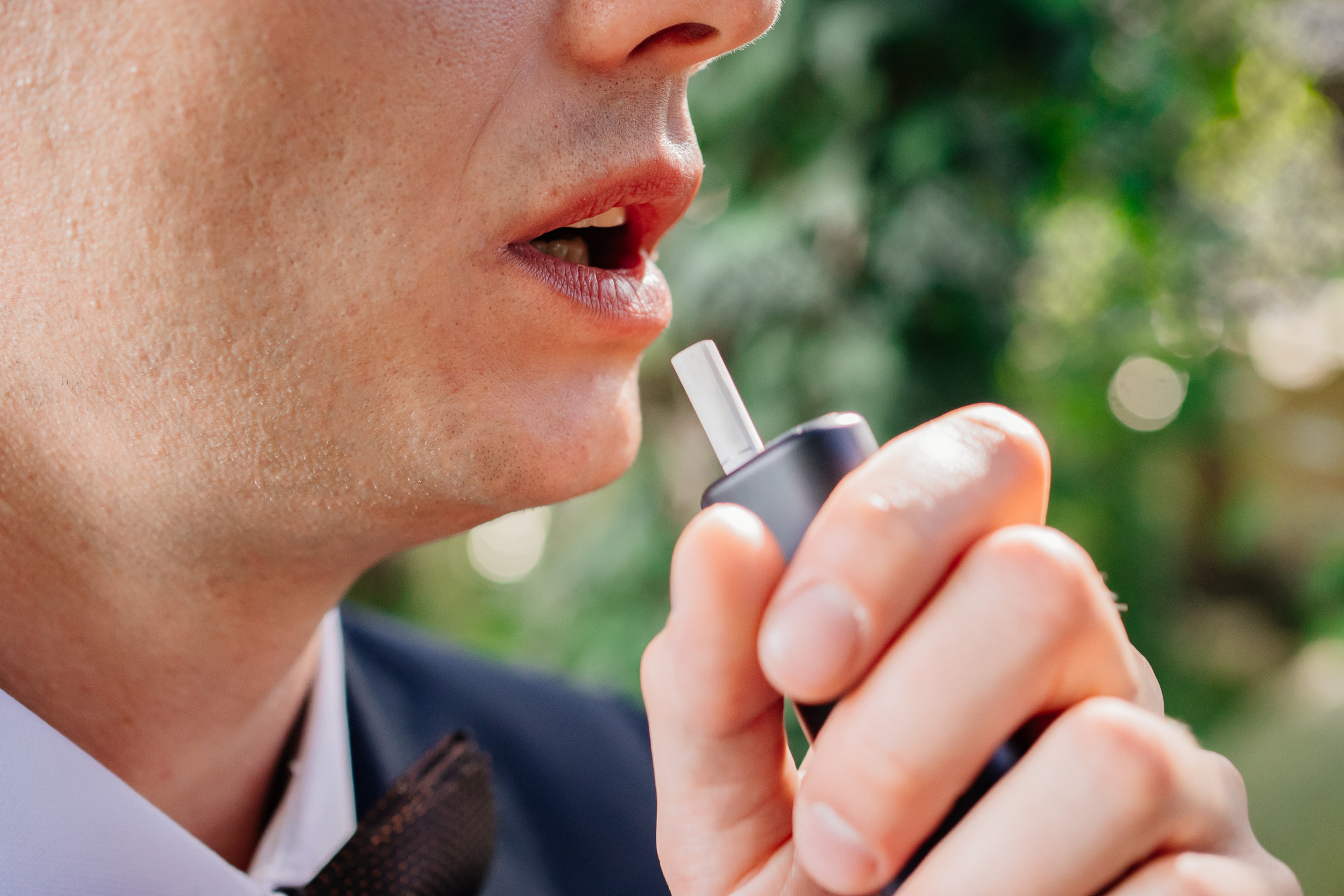For decades, the primary way to consume nicotine was to release it by burning and smoking tobacco. Now, heated tobacco products (HTPs) offer a similar experience to combustible cigarettes, but can...
Q&A with Phil Saunders: What you need to know about Heated Tobacco Products
Nicotine

Aug 5, 2024 | Published by Phil Saunders
Nicotine
Heated tobacco products (HTPs) are continuing to grow in popularity globally. The market’s worldwide value grew by $3.7 billion from 2022 to 2023, with Euromonitor International expecting it to hit $40.6 billion in 2024, a further $5.4 billion growth[1]. Here Senior Business Development Manager, Phil Saunders at nicotine testing and consulting specialist Broughton, answers the need-to-know questions about bringing a HTP to market.
What is a HTP?
HTPs are a type of reduced-risk nicotine device that offer a similar experience to combustible cigarettes but can help reduce exposure to potentially harmful toxicants. HTPs are products that heat tobacco to a high temperature without combusting it — the user inserts a specially-designed tobacco stick into a battery-powered device, which heats the tobacco to approximately 350°C to produce vapour.
HTPs can be electrically, carbon or aerosol-heated. Heating mechanisms can comprise a resistive heat-blade system or may use induction heating. Product design is important in achieving an appropriate nicotine yield and aerosol cloud without increasing toxicological risk.
How important is a TPP when developing a HTP?
One of the first steps in designing a HTP is creating a target product profile (TPP), which outlines the desired characteristics or ‘profile’ of the product. According to the World Health Organisation (WHO), TPPs “state intended use, target populations, and other desired attributes of production, including safety and efficacy-related characteristics.”[2] Usually, manufacturers will have a vision of what they want their HTP to look like. While some may try to emulate market-leading products, others will opt for very different flavours, form factors, and aesthetics.
What market trends are there?
A growing trend in device design is personalisation, with some brands launching limited edition products and providing coloured panels to personalise their HTPs. Also, Bluetooth connectivity is now standard on many products, such as the latest Glo Hyper Pro, which has an LED display and can provide real-time feedback.
A TobaccoIntelligence[3] analysis of the industry in March 2024 suggested that innovation is focusing on improving consumer experience, better battery performance, personalisation, and ringfencing against cross-compatibility. Another notable improvement has been reduced warm-up time, which promises a more effective user experience by making the device faster to use. The report adds that future launches of heated tobacco products in the United States and China are likely to significantly influence the global market and future innovations.
HTPs are complex products and, to streamline route to market, many manufacturers choose to work with third-party specialists. Expert partners like Broughton can frame what an ideal finished product will look like and help manufacturers build a TPP that meets both user and market needs. Once this is agreed, Broughton can help turn this vision into actionable targets and design parameters.
How should I test my HTP?
The first three stages of evaluating a HTP typically include: evaluating product design, testing aerosol chemistry, and performing a toxicological assessment. HTPs are intended to be a smoking cessation tool, so they must be tested to ensure a reduced toxicological risk compared with conventional combustible products.
In the early stages of product realisation, it’s important to capture as much data about the HTP’s design and its performance as possible. Regular, iterative tests are essential, and so are short development cycles so that manufacturers can quickly capture the data, identify areas for design optimisation, and make the necessary changes.
While it’s important to test multiple parameters, manufacturers must be selective with these to avoid costly delays. Some of the key parameters include total particulate matter (TPM), the amount of nicotine that the HTP delivers, and the presence of a visible cloud upon inhale and exhale. This iterative stage is a good opportunity to assess toxicological touchpoints, such as combustion markers, and whether the product meets regulatory requirements. Consequently, iterative testing allows manufacturers to understand their product’s suitability from a consumer and regulatory standpoint.
How are HTPs regulated?
Most countries do not have specific regulations for HTPs but regulate them in the same way as either combustible cigarettes or alternative tobacco products. In the European Union and UK, HTPs are regulated by the Tobacco Products Directive (TPD) and the Tobacco and Related Products Regulations (TRPR) respectively, which carry requirements for testing, packaging, and more.
In the US, HTPs are regulated using the Premarket Tobacco Product Application (PMTA) or the Modified Risk Tobacco Product (MRTP) process, with the PMTA being the established route to market. There are very few products that have been submitted and granted a PMTA or a MRTP from the US Food and Drug Administration (FDA), which is required to make reduced-risk claims. A regulatory expert partner like Broughton can support your application, by helping to complete the regulatory dossier and making recommendations on what data will give you the best chance of success.
Building a strong picture of the target market can help manufacturers understand the regulatory requirements and ensure that these are built into their HTPs. Aerosol testing requirements will vary according to the regulatory framework being followed. At the most basic, the EU and UK requires measurement of a minimum of tar (nicotine-free dry particulate matter), nicotine, and carbon monoxide. The far more rigorous requirements of a PMTA, required for launch into the US market, include a full understanding of aerosol chemistry and a detailed understanding of the product's appropriateness for the protection of public health (APPH).
Whichever regulatory pathway the manufacturer follows, experts, including analytical chemists, toxicologists, and clinical scientists, must design testing protocols that include all the relevant parameters for regulatory approval.
How can you streamline the route to market?
Working with a partner like Broughton that offers a fully integrated service, which covers product development, extractables and leachables, testing and characterisation, toxicology, stability studies, and regulatory consultancy can expedite the process and increase the chance of approval. In addition to freeing up internal capacity, outsourcing testing and toxicological assessments can help refine the product design and streamline the regulatory application process, as the manufacturer can benefit from the partner’s previous experience.
Broughton, recognising the potential of HTPs in tobacco harm reduction, has established a state-of-the-art HTP testing facility, from which it provides comprehensive services to assess the safety and performance of HTPs. This helps ensure compliance with stringent regulatory standards.
Are you interested in working with an experienced partner on your HTP testing or regulatory submission? Get in touch to find out more about how we can help bring your heated tobacco product to market.
[1] https://tobaccoreporter.com/2024/04/01/turning-up-the-heat-4/
[2] World Health Organisation, Target product profiles, https://www.who.int/observatories/global-observatory-on-health-research-and-development/analyses-and-syntheses/target-product-profile/who-target-product-profiles
[3] https://tobaccointelligence.com/a-global-overview-and-analysis-of-the-evolution-of-the-heated-tobacco-industry/

.jpg?height=200&name=iStock-1481139503%20(1).jpg)

